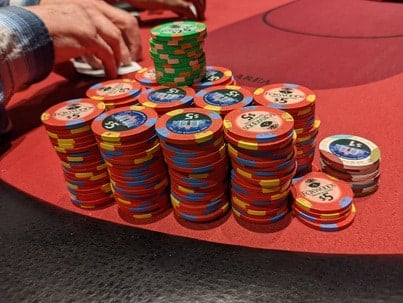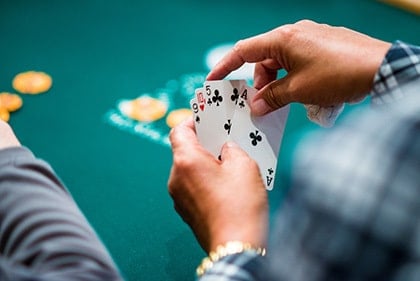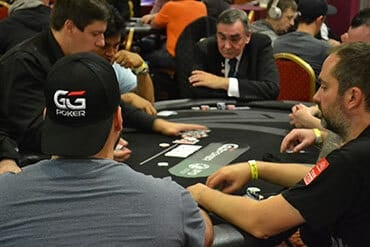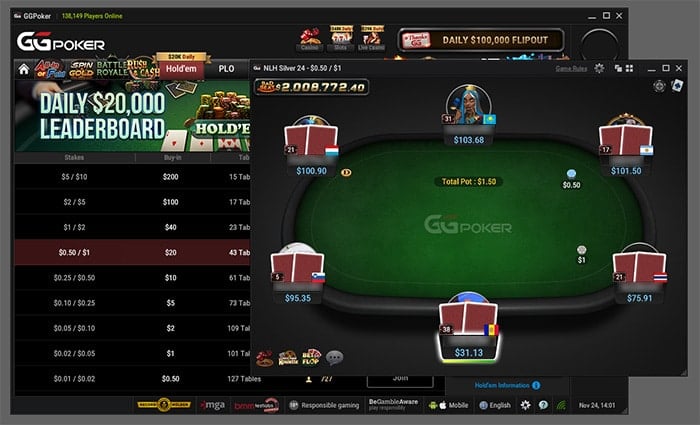Meet your Opponent: Part 1 – The Calling Station

Beat your Opponent: Part 1-The Calling Station
Written by: Louis-Philipe ‘Maniac’ Mondoux
You are playing poker in the GGMasters $25 Double Stack, and your opponent is never folding. How do you handle this type of opponent? Do you keep betting? What if your opponent plays a ridiculously wide preflop range? How do you adjust to this style of poker? Let’s take a look at the different player types you will encounter at the table and how to adjust your own strategy to maximally exploit them.
As part of your strategy development for this villain, the first thing you want to consider is what is the best Game Theory Optimal (GTO) poker play.
The Calling Station
In your poker game, if the flop comes down A-K-J and you know your opponent calls down bets against ‘Under the Gun’ (UTG) with an under pair, you assume he likes to call with a wide variety of poker hands. Calling Stations are usually loose-passive poker players with a high ‘Voluntary Put in Pot’ (VPIP) (35+), a very low ‘Preflop Raise’ (PFR) (5) and an even lower 3-bet (3-). You will find some calling stations that are Loose-Aggressive (LAGS) poker players.
The Loose-Passive Player
The loose-passive poker player prefers to trap rather than extracting maximum value from their best hands. The best possible Expected Value (EV) scenario in poker happens when you have a hand like AA, your opponent has KK and you get it all-in preflop. No skill, edge or strategy will ever have a greater poker EV than this. Calling station players lock themselves out of the best possible value position in the game as they perceive that the best winning strategy is by being tricky. They are wrong. The benefits of being deceptive will never be greater than getting it all in against a worse hand preflop.
The LAGS
The second type of calling station, the LAGS who fall in this category, are players who bluff aggressively when they have the initiative, and call too widely when defending. They have very little defining strategy playing pre-flop. They believe that everyone bluffs as much as they do and as a result they tend to call too often when playing poker. LAGS tend to play poker this way because they believe this is the best way to win every pot. These players will play a lot of pots and expect everyone to play just as often. These players tend to have range construction problems when selecting a poker hand.
Constructing Your Range
Constructing your range for starting poker hands is very similar to packing a box after your girlfriend kicks you out: a small, well-taped box will be easy to work with and pack, while a huge box without tape will leave your possessions all over the street. Starting poker hand ranges work the same way. If you have a tight and well constructed range, you will be extremely tough to play poker against and you will tend to keep your poker chips. If your range is super loose with a very wide construction, you will watch as your poker chips disappear little by little each street.

How to Adjust
When facing a calling station one of the most important strategies you need to remember is bluff less often. However, when you try to take your two cards on a missed draw and turn them into a winning hand, you will need to make an extraordinarily large bluff. Small bets are no use against calling stations, unless you are trying to build the pot. When you bet big, the alarm bells start to ring even for the biggest stations.
You will also want to increase your betting size with your value hands. On flops where, against a regular poker player, you would bet 20% or 33% of the pot, you should push it to 80% or a pot-sized bet. Blast the pot again if the turn improves your equity or changes the board texture. You will maximize your results against the calling stations using bigger sizes for value. As an added bonus, your bluffs will gain fold equity.
You should use the ‘normal’ 20% to 33% bet when you are betting for thinner value, such as when you have poker hands like second pair with a good kicker.
When you have the nuts, simply “bet, bet, jam” against a calling station. This is where they tend to lose all their poker chips.
Timing your bets is also a decisive factor whether you are playing against a station, a maniac, or a super reg. If you act very, very quickly with value hands, some players will call more often. If you take your time with bluffs, some players will fold more. Bluffing is not comfortable. Most poker players will want to steer clear out of discomfort. They don’t want to spend a lot of time with their bluffs. It is my opinion that when other players are tanking all of their time bank and then shoving, they are likely not bluffing. We can use this and reverse it to our advantage. Bet fast if you want them to call. Bet slow and waste your time bank if you want them to fold.
Timing combined with big bets, in combination with the knowledge gleaned above, should allow you to maximize your exploitation of the calling stations’ natural tendencies.
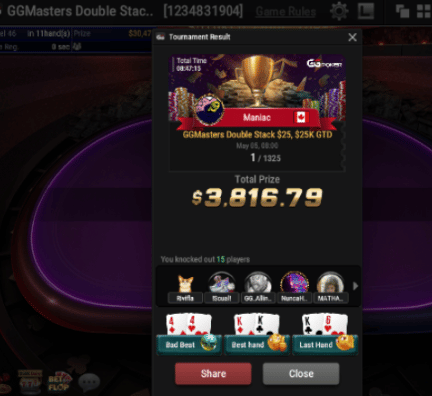
About the author: Louis-Philippe works as a member of the pokercoaching.com team. You can find more content by him here
